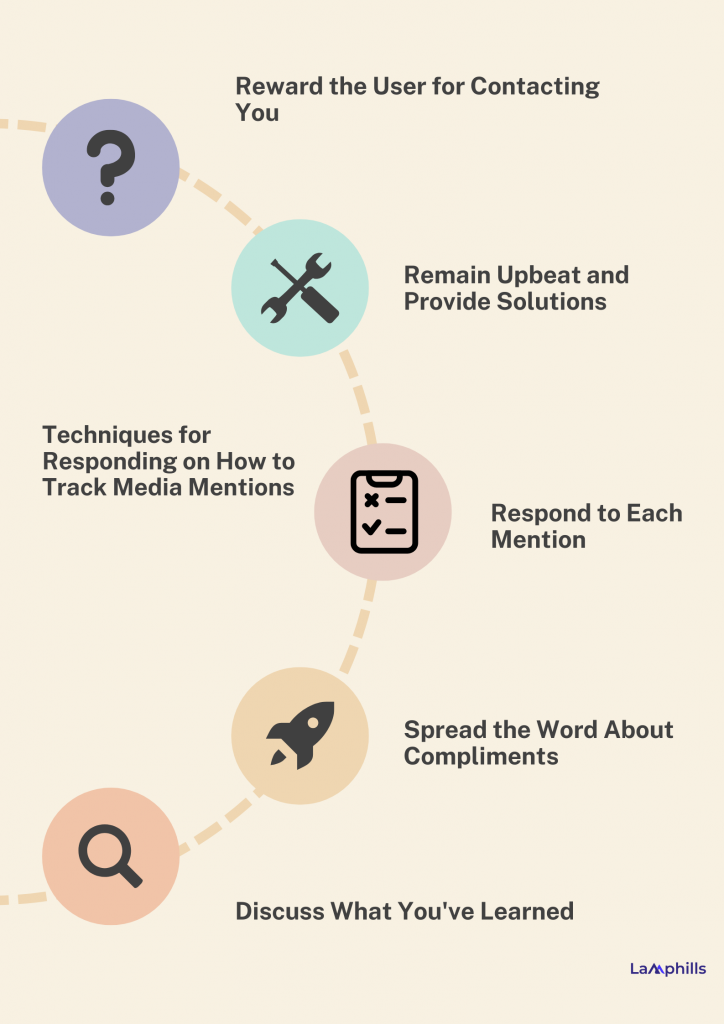Monitoring media coverage is a crucial component of every professional communicator’s toolkit, regardless of whether they are in charge of public relations for a large or small corporation. By closely monitoring what news outlets and media users are saying, your company may actively participate in conversations and gain insight into how important audiences view your brand.
As someone who makes a living creating content in PR, marketing, and brand-building, media mentions are coveted currency. But keeping tabs on every single reference to your company, product, or client across the vast online landscape is one of the biggest headaches.
We’ve all been there – spending hours scouring Google, social media feeds, and sketchy pay-per-mention services only to miss a crucial feature, review, or interview opportunity that could have delivered serious visibility and credibility.
Well, those FOMO days of random media monitoring are officially over. In this comprehensive guide, I will lay out all the tools, strategies, and insider tips for building an airtight media tracking system that leaves no mention unnoticed.
Key Points
- Media mentions refer to any posts or coverage that reference your brand, whether through tagging or simply naming it.
- Tracking media mentions is crucial for PR, marketing, sales, customer support, and other departments to gauge brand reputation, identify opportunities/risks, find influencers, and get audience insights.
- The most effective ways to track mentions include using a media monitoring tool, setting clear goals/KPIs, refining your approach based on insights, and carefully selecting keywords/sources.
- Benefits of tracking mentions include assessing PR efforts, understanding your target audience, mitigating risks, identifying influencers for outreach, and managing brand reputation.
- Responding strategies include thanking users, providing solutions, replying to all mentions, resharing compliments, and sharing learnings internally.
What are Media Mentions?
Media mentions are posts that refer to your brand. This includes postings with your brand tagged (also known as @mentions) or simply referenced by name in the caption.
Most people believe that only PR and marketing experts can benefit from tracking mentions. This is not entirely accurate.
Every PR and marketing professional’s job should include tracking mentions, or at least it should. Nevertheless, monitoring mentions can also be advantageous for other departments.
For instance, a sales department may monitor mentions to identify new leads, while a customer support department can track mentions to raise customer happiness.
Though they don’t tag brands in their postings, consumers frequently mention brands online, which is another reason to track social mentions. If you ignore postings like these, you can miss out on insightful information and comments that could propel your business to new heights.
Most Effective Ways to Track Media Mentions
I can’t overstate how crucial comprehensive media monitoring is. It’s the difference between capitalizing on every single brand mention and valuable opportunity or watching potential wins slip through the cracks.
Below is what I’ve found to be hands-down the most effective way to track media mentions across every possible online channel.
#1. Make Use of a Media Tracking Tool
A media monitoring tool can effectively and efficiently track media mentions. This kind of software offers real-time data and notifications while automating the tracking of media references. Charts, graphs, and dashboards can also be used to analyze and display your media performance. Along with sharing reports and insights with your team and stakeholders, you can also benchmark and compare your achievements with competitors and industry standards.
#2. Decide on Your Objectives and KPIs
You must clearly define your goals and your methods of measurement before you can begin monitoring media mentions.
For instance, when my company needed to track media mentions, the first deliberation was on which goals we were aiming to achieve—better customer loyalty, lead generation, public opinion, or brand awareness. Which key performance indicators (KPIs) will demonstrate our level of success?
For example, you may wish to monitor the quantity and calibre of media mentions, the tone and attitude of the coverage, the audience’s reach and engagement, or the lead conversion and retention rates.
#3. Assess and Refine Your Approach
The next step was to assess and refine our plan in light of the information and understanding we gained from monitoring media mentions. You can learn about fresh opportunities and risks in the market and industry, as well as your PR campaign’s strengths and shortcomings, with the aid of this feedback.
Additionally, we went ahead and interacted with our audience and influencers, modified and enhanced our media messaging and positioning, and showed stakeholders our worth and influence. By using these tools and advice, we also tracked media mentions more efficiently and accomplished our PR objectives.
And don’t forget this, monitoring media mentions is a continuous process that has to be reviewed and adjusted frequently.
#4. Decide on Your Keywords and Sources
Selecting the media outlets and search terms you wish to monitor is the next stage. Online, print, broadcast, and media platforms are examples of media sources. By utilizing filters like language, region, topic, or domain, you can focus your search. Words or phrases that are pertinent to your business, sector, line of work, or marketing initiative are known as keywords. You can make use of industry phrases, rival brands, influencers, hashtags, slogans, and brand names. To further narrow down your search, you can also use modifiers like quotes, brackets, or operators.
The Advantages of Track Media Mentions
For PR to be successful, media monitoring is essential.
There! I expressed it.
But it is, in actuality.
The rationale is that you can never be in the dark about anything when it comes to public relations. You have an essential obligation to be aware of what’s happening with everything, including how people view and present your organization. You must be aware of the actions of your rivals and the direction that your sector is taking.
And that information comes from media monitoring.
Here are some particularly important for monitoring:
#1. Assessing Your Monitoring Coverage Efforts Over Time
From my research on this topic, I concluded that every professional must face the day when they must examine their job closely and evaluate their performance with objectivity. Either their clients, their boss, or both will want to see a change if what they’re doing isn’t working.
You can determine if your efforts are yielding results by keeping an eye on the media. The only way to find out if you’re even receiving coverage is to monitor it. You can’t tell if you’re deserving of it until you keep an eye on the media.
Finally, assessing your work is essential in any career, but PR and communications professionals are invariably driven and competitive. So, I am aware that learning and growth are more desirable than falling behind.
#2. Recognizing Who Your Target Market is
The truth is that you’ll have a deeper understanding of your target audience when you look for factors other than your brand. You will discover what matters to them and what doesn’t, what they think about your rivals, and what they like and don’t like about your company. You will also understand how they communicate about the topics that are important to you.
This abundance of knowledge will enable you to connect and interact with your audience more effectively, which is essentially the goal of public relations, isn’t it?
#3. Mitigation of Risks
It is a reality of doing business that no firm is immune from risk.
Several corporate departments are often in charge of identifying and reducing potential risk; however, by engaging a media monitoring service, the workload can be centralized by:
- Detecting supplier-related risk by keeping an eye on media references of both new and current suppliers
- Keeping an eye on possible risks arising from modifications to the legal environment in which you operate.
- Keeping a watch on what rivals are saying to the market and how it affects how the market views them
#4. Selecting Influencers and Media for Outreach
You can identify the journalists and influencers you should target by monitoring.
For me, If I come across someone who writes a lot about my rivals, I can get in touch with them and explain what makes your business unique. Probably I come across someone who is not entirely in agreement with me, I can try to persuade them; the hope is that this will cause them to influence the opinions of their readers as well.
Working with the media to disseminate information to the public is a component of media relations, as we just discussed.
While there are many factors to consider when it comes to media relations, building trusting connections with the media and crafting an engaging story pitch are major components of the field. But we’ll talk about that later. Now, let’s check out the next step.
#5. Perception and Reputation of a Brand
Your reputation is what you trade on. Furthermore, it is only as powerful as how others view your brand.
Nobody enjoys being caught off guard by a danger that could harm their company’s reputation. By keeping an eye on the media, you may spot possible emergencies and minimize harm with prompt and strategic action. It is also necessary to develop a successful reputation management strategy that enables you to take a proactive approach rather than a reactive one.
Remember that an image speaks a thousand words. It follows that keeping an eye out for visual coverage of your brand is only logical.
Techniques for Responding to Track Media Mentions

#1. Reward the User for Contacting You
You should express your gratitude to someone who promotes your brand on media. They’re endorsing your brand and helping you reach a new group of prospective clients.
But it’s equally critical to express gratitude to users who have contacted you with questions or even grievances. Every unfavourable comment is an opportunity to reassure an irate client and demonstrate your sophistication and helpfulness to others.
Make sure your gratitude sounds sincere rather than prankish. Although it’s not required, you can always express gratitude to someone for bringing up an issue.
#2. Remain Upbeat and Provide Solutions
It’s critical to interpret less-than-positive comments as critique rather than criticism. Even an irate reply can reveal more about your audience’s problems. Therefore, it’s critical to respond positively to all mentions, including those that take a negative stance.
In response to critical feedback, concentrate on offering ways to improve the user’s experience going forward. If a customer has a positive online experience, 75% are likely to suggest your brand.
#3. Respond to Each Mention
It only makes sense for you to reply if someone makes an effort to mention your brand in the media. Salesforce reports that 64 per cent of consumers anticipate interacting with brands in real time.
On media, when someone tags you, they typically anticipate a reply. Responding gives you an additional chance to wow someone by demonstrating that you’re truly listening when they mention your brand without identifying you.
#4. Spread the Word About Compliments
Resharing compliments is a terrific method to increase the social proof we discussed before. Reshares can also be used to draw attention to parts of your offering that you would not have mentioned on your own.
For example, someone from my media reshared my generated content, which highlights the market’s numerous vendors. This method was simple to let visitors know what to expect without adding to their media manager’s workload.
#5. Discuss What You’ve Learned
Keeping an eye on your media mentions will teach you a lot. It is imperative to disseminate this knowledge to the pertinent teams across the entire organization. For instance, it’s gold for your marketing team if users are tagging you nonstop because they are enamoured with a current campaign and want to interact with the message.
Similarly, it’s important information for product development if users frequently tag you due to a specific problem with your product or a feature they wish you would release.
Tools for Tracking Media Mentions
#1. Google Alerts
Using Google Alerts to start following media coverage is among the finest and simplest methods to begin. By entering important terms and phrases (such as the name of your company or brand), you can use Google Alerts to receive email notifications whenever those terms are mentioned in online news sources.
In addition, Google Alerts provides several customizable filters. The most prominent ones let you select the news sources you wish to have tracked and the frequency at which you will receive emails. For instance, you have the option to select not to receive notifications if you are not interested in keeping track of blog mentions.
#2. Talkwalker
Talkwalker describes itself as a “consumer intelligence platform,” enabling marketers to keep an eye on and follow discussions to react appropriately and gain a deeper comprehension of how their company is being viewed. Also, Talkwalker offers two free services: Talkwalker Alerts and Talkwaker Social Search. There are also premium versions of the platform with more features.
Talkwalker Alerts is a free tool that tracks Twitter as well as websites, blogs, and forums for your brand’s keywords. To keep you updated, these Alerts gather the most significant conversations around your business and deliver them straight to your inbox. You may also use particular filters to tailor your results, just like with Google Alerts, so that you always get
Checklist on the Best Way to Track Media Mentions.pdf
The Best Tools for Tracking Your Media Mentions at a Cost
#1. Cision
One of the largest media monitoring firms with a global reach, Cision can source any of your media coverage across print, web, and broadcast media. Cision One is a complete media monitoring service provided by Cision to PR professionals who want to monitor and evaluate their media presence. Costlier than others, Cision has one of the largest media databases. Socially sophisticated analytics and reporting features let customers track sentiment, gauge the success of media initiatives, and pinpoint influential people, making them stand out from the competition. This all-inclusive tool is an excellent choice for global brands or businesses receiving hundreds of media mentions daily.
#2. Buzzsumo
Although Buzzsumo was first designed as a tool for content marketing, it may also be used to track media attention. By creating an alert for your brand or brands, my company uses this to keep track of our mentions and receive emails whenever the term is brought up. Sharing and expanding coverage within the app is simple. I also appreciate that you can check which coverage item has had the most shares and engagements in addition to receiving alerts about it. With the largest index of social engagement data in the globe, Buzzsumo is the perfect tool if you want to track down media mentions and gauge their influence on media.
#3. Prowly
Prowly enables organizations to obtain useful insights and maintain an advantage in the media landscape through its extensive media database, real-time alert system, comprehensive analytics, media monitoring, and competitor analysis capabilities. It stands out for having an intuitive user interface that makes it simple for users to navigate and quickly extract pertinent information. Also, Prowly strongly emphasizes customization, which enables customers to modify alerts and reports to suit their requirements and guarantee the most pertinent and useful information.
Who are Track Media Mentions for?
Media monitoring is necessary if you work for a company that interacts with the public in any capacity—as volunteers, neighbors, investors, workers, constituents, investors, or anything else—and you are concerned about your company’s reputation and public image.
Similarly, keeping tabs on what’s being said about your sector, your rivals, and the issues your organization cares about is essential if you’re looking ahead and want to identify the opportunities and risks that could completely transform your business. A media monitoring service can be of assistance in this regard.
Let’s think about a couple of situations.
#1. Small- to Medium-Sized Businesses (SMEs) and Startups
Positive media attention is still the best indicator of credibility in the modern corporate world and, when used wisely, may be a potent growth hack. A company can attract a lot of attention through earned media, which can aid in attracting new talent, investors, and customers.
According to a different author, third-party sources like the media or really happy clients are the most reliable sources of information about your company instead of the information you provide on your website. When people read or hear about your brand in the media, they are far more inclined to believe it than if they hear it from a pushy salesperson.
But here’s the thing: if you don’t routinely monitor every media outlet that could mention you, how will you amass and utilize this incredible credibility?
#2. Big Companies
Keep an eye on the media for the healthcare industry naturally; compared to startups and SMEs, larger businesses are in slightly different scenarios.
Although big companies receive a lot of media attention and online mentions, not all of that material is pertinent to their daily operations or overall success. They require assistance in sorting the vital news from the noise. Large companies must also be able to assess their performance, show the return on investment of their PR campaigns, and effectively share this information with important stakeholders.
Big organizations usually prefer to obtain curated (managed) media monitoring reports that focus on only the most relevant mentions, whereas small firms might be able to set up an automatic monitoring service and sift the relevant mentions from the noise themselves.
How do you count media mentions?
Use media monitoring services like Mention, Google Alerts, or Brandwatch to efficiently keep tabs on media mentions. Specify keywords associated with your company and sector to get alerts in real time. Keep an eye out for pertinent mentions on news sources, industry forums, and media sites.
What are mentions?
One way to let coworkers know about a post you’ve made is to @mention it. Anywhere in the post body that has a @mention, the @username is present. Share your news and name particular coworkers using the @mentions feature. Even if they are not following you, the persons you indicated get alerted to your post.
Why are mentions important in social media?
When your brand or associated keywords are referenced on blogs, forums, news stories, and other internet channels, these are known as social mentions. These mentions give you insightful information about what people are saying about your company, enabling you to react, interact, and make informed decisions.
How to measure mentions on social media?
The number of times your business has been mentioned on social media platforms within a specific time frame, such as a month or quarter, is used to calculate social media mentions. To keep track of online mentions, you can utilize a social media monitoring platform like Mention.com or HootSuite.
How to increase mentions on social media?
Getting more media mentions can be achieved by collaborating with influencers. Social media influencers have large followings, and when they mention a brand, brand awareness and engagement may rise.
Conclusion
Having access to the best media monitoring tools can be a secret weapon in staying ahead of your competition in a world where media trends and regulations change quicker than you can say “viral.”
Monitoring tools are useful for tracking campaigns, identifying and monitoring potential problems, gaining insights into industry news, and identifying significant media references. They can be utilized on a variety of venues, such as media, TV, online news, and forums.
Related Articles
- EARNED MEDIA: Definition, Examples, and Best Practices
- Best Social Media Customer Service Practices for 2024 (Detailed Guide)
- Social Media Engagement: 7 Interactive Post Ideas That Helped Us.
- 20 BEST MEDIA MONITORING TOOLS IN 2024
- Top 33 Social Media Analysis Tools In 2024






